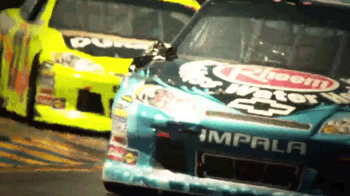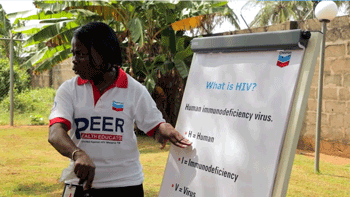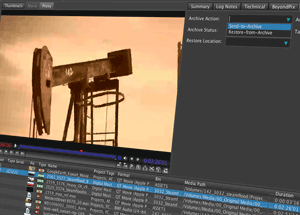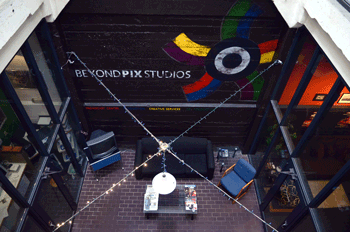 “CatDV saves lots of time, and enables the team be more productive… I’d laugh if they didn’t have CatDV at the next company I work for.” Andrea Barnett, editor/pipeline specialist, Beyond Pix
“CatDV saves lots of time, and enables the team be more productive… I’d laugh if they didn’t have CatDV at the next company I work for.” Andrea Barnett, editor/pipeline specialist, Beyond Pix
The company: Beyond Pix, San Francisco, California
Beyond Pix is a creative, full-service, concept-to-distribution, production and post production facility that, since it’s founding in 1992, has been determined to make video production as open and as accessible to its clients as possible. Along with an approachable staff of industry professionals, plus state of the-art equipment and facilities, the company is now using CatDV asset management to work in ever more responsive and collaborative ways with its blue-chip clients.
 Located in the heart of San Francisco’s media gulch, Beyond Pix transforms ideas into visual realities, creating advertising spots, corporate programs, sizzle reels, plus interactive media and online content, for a wide range of well-known brand names such as Yahoo, eBay, Amazon, Chevron, Salesforce, NASCAR and Toyota. Its studios are used by local and national TV stations and production companies too, to shoot interviews or second unit materials, and even luminary feature directors such as Woody Allen and Francis Ford Coppola feature on the client list.
Located in the heart of San Francisco’s media gulch, Beyond Pix transforms ideas into visual realities, creating advertising spots, corporate programs, sizzle reels, plus interactive media and online content, for a wide range of well-known brand names such as Yahoo, eBay, Amazon, Chevron, Salesforce, NASCAR and Toyota. Its studios are used by local and national TV stations and production companies too, to shoot interviews or second unit materials, and even luminary feature directors such as Woody Allen and Francis Ford Coppola feature on the client list.
“As Beyond Pix has grown, so has the importance of managing assets properly,” says Andrea Barnett, editor/pipeline specialist at Beyond Pix. “When I started as an assistant in 2010, I experienced many jobs that were not organised – no one really knew the exact whereabouts of media assets on tapes and hard drives, and a lot of time was spent searching for them. Often, we’d have several jobs going through post production at the same time clogging up our SAN. All this meant that people were spending too much time on housekeeping than the creative job at hand. Due to the asset management routine we had in place, closing out projects and getting them properly archived was time-consuming too. It was all too clear that we just had to have a bigger and better process to deal more effectively with day-to-day tasks and help us meet deadlines.
 “Thanks to CatDV, Beyond Pix today has a much more streamlined system for managing assets and closing out jobs. It saves lots of time, and enables the team to be more productive,” she says. “When, in the past, a project might have taken two days to archive, thanks to CatDV we can now do three or four projects in a single day.”
“Thanks to CatDV, Beyond Pix today has a much more streamlined system for managing assets and closing out jobs. It saves lots of time, and enables the team to be more productive,” she says. “When, in the past, a project might have taken two days to archive, thanks to CatDV we can now do three or four projects in a single day.”
The challenge: moving away from time-consuming manual asset-logging
Prior to CatDV, Barnett says the asset management only really came together when closing out jobs for archive, and therefore freeing up space on the SAN. The principal database management tools were Filemaker and CDFinder. While these enabled the input and cataloging of useful metadata, and other essential production items, the input of that data was a manual and hugely time-consuming process.
 “To close-out a project, we had a 17-part checklist list, but it could take up to two days to input and organize just one project and then archive it off to LTO-tape,” she explains. “This would include inputting metadata – details about the content of the footage, camera type, recording format, location, etc.. We would then add file ID numbers, and export a delivery file with all the specifications to archive. All-in-all it was hard, super-detailed, manual work, and we were actually losing people to these mundane archiving and management tasks, when they really needed to be focused elsewhere.
“To close-out a project, we had a 17-part checklist list, but it could take up to two days to input and organize just one project and then archive it off to LTO-tape,” she explains. “This would include inputting metadata – details about the content of the footage, camera type, recording format, location, etc.. We would then add file ID numbers, and export a delivery file with all the specifications to archive. All-in-all it was hard, super-detailed, manual work, and we were actually losing people to these mundane archiving and management tasks, when they really needed to be focused elsewhere.
“When we saw CatDV, however, we instantly realized how its automatic metadata capture capabilities would help to cut-out so much of the laborious manual logging that we had to do previously. We were impressed by how well it integrates with third-party storage and archive systems, and how easy it is to find materials. We could also see how the WebClient might be utilized, not just by our in-house producers, but by clients as well, and usher-in new ways of working together.”
The solution: CatDV and CatDV Web Client software
 Barnett says the Beyond Pix team was hugely impressed when JB&A, the north American distributor for CatDV, provided an initial demo of the toolset in 2012.
Barnett says the Beyond Pix team was hugely impressed when JB&A, the north American distributor for CatDV, provided an initial demo of the toolset in 2012.
“We were literally blown away by the natural capabilities of CatDV to automatically capture and handle the metadata that we had, until then, been inputting by hand, and its ability to integrate with LTO-tape archiving,” she proclaims. “I was absolutely ecstatic about the prospect of making low-res proxies of the original media with CatDV, keeping them on the server, and viewing them back through the different CAtDV clients whenever we wanted. Amazing! The old process meant that we often had to un-archive materials from LTO, which was all very slow and frustrating.”
Beyond Pix invested in a package of CatDV Enterprise licenses running on Mac, plus multiple WebClient licenses, and an LTO-5 archiving from Storage DNA. CatDV systems are integrated with Beyond Pix’s Avid ISIS 12TB shared storage and the LTO-tape archive system.
“Using CatDV we assemble everything that relates to a project in a catalog – scripts, music, RAW footage, the final edited piece, along with metadata about frame rates, format, aspect ratio, camera, date, running time, size, bit-rate, etc..” explains Barnett. “Then through a simple action request in CatDV, the archive to LTO takes place at the click of a button. The WorkerNode picks up the request and just does it. Because of WorkerNode, we’ve been able to reduce the amount time required for a human to have to manually complete a task as we can now easily delegate some to WorkerNode’s automation. This saves us so much time by making the last two steps of archiving a breeze, since essentially no one has to do anything but watch WorkerNode work.
“When the LTO-tape archive is complete, CatDV automatically gives us the date and cartridge number, with no manual intervention at all, other than putting the tape in the archive machine. The process also means we have a fast and efficient way of keeping space on the SAN for new projects.”
Barnett says that CatDV’s WebClient in particular, is enabling new levels of access and collaboration with clients, such as energy corporation Chevron. As part of its work for Chevron, Beyond Pix has catalogued and archived entire productions – including stills, RAW camera footage, finals, low-resolution viewing copies, with footage logged, and interviews properly labelled. Chevron’s in-house production team can then search all of this media, and make requests remotely via the CatDV WebClient.
“Initially, the client had very little idea of where footage was, as hard drives were literally kept in duffle bags,” recalls Barnett. “To find anything, their video department would have to load each drive and look through the footage. So we took all of those drives, and ingested and organized the footage for them in CatDV. They needed to learn how to use and customize CatDV WebClient to their own needs, but that was pretty simple. Now they have one of the fastest and easiest ways to keep track of their assets. They can find materials from their own offices, and then send project requests to us via the WebClient.”
 As an example, she recalls a project that Chevron was undertaking at an LA post house, for which B-roll was required of oil fields in Bakersfield. “They were able to quickly browse and find the clips they needed, and send me the request all via the WebClient. It was then just a matter of me downloading the footage to a harddrive, about 1TB of material, and dispatching it to them in LA.”
As an example, she recalls a project that Chevron was undertaking at an LA post house, for which B-roll was required of oil fields in Bakersfield. “They were able to quickly browse and find the clips they needed, and send me the request all via the WebClient. It was then just a matter of me downloading the footage to a harddrive, about 1TB of material, and dispatching it to them in LA.”
Barnett concludes: “Ultimately CatDV has solved many challenges, and made it much easier, less stressful and more efficient to keep track of client assets. It’s been a very positive experience, and I’d laugh if they didn’t have CatDV at the next company I work at.”

